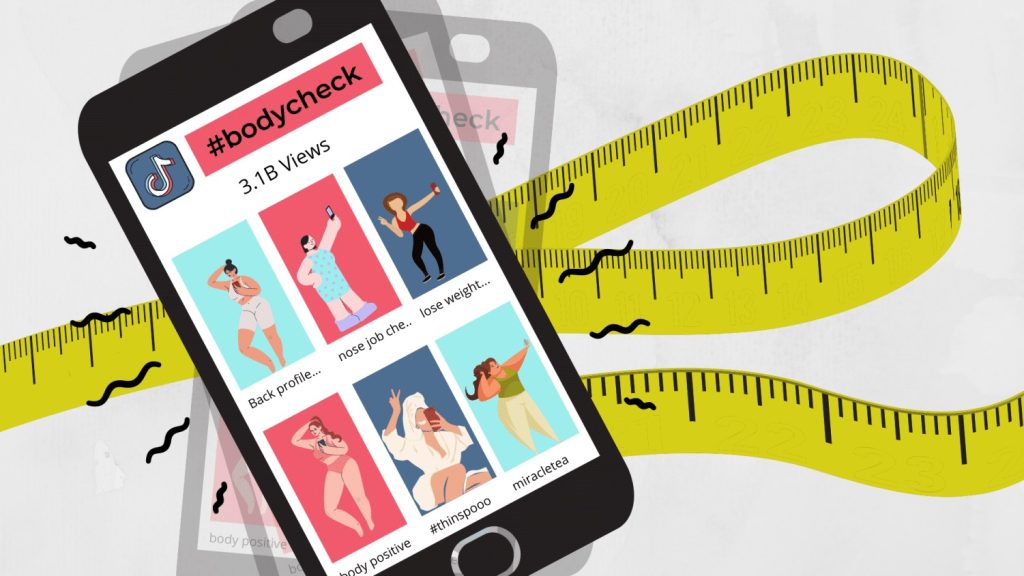This week I read the article “Influence of social media exposure on body image: An experimental study of Instagram use and body dissatisfaction among college women” by Kleemans et al. (2018). The study explores how idealized Instagram content affects female college students’ perceptions of attractiveness, mood, and self-esteem. Participants who viewed “fitspiration” and beauty influencer posts reported significantly higher body dissatisfaction than those who viewed neutral lifestyle content. The authors explain this through social comparison and objectification theories, showing how even short exposure to appearance-focused content can trigger negative self-evaluation and desire for body modification. The study also points out that media literacy and self-awareness can help reduce these negative effects, suggesting that critical engagement, not total avoidance, may be a healthier approach.
This article supports my MA documentary project, by providing strong empirical evidence that aligns with the personal stories I want to highlight. While my project takes a qualitative approach, Kleemans et al.’s findings help frame the mechanisms social comparison, body surveillance, and algorithmic exposure—that I plan to illustrate visually through interviews and narrative structure. It also reinforces my intention to balance critique with empathy: not portraying social media as purely harmful, but showing its emotional complexity and the blurred line between pleasure and pressure.
I also developed a short writing piece that may serve as an opening scene for my film:
“It’s a normal Monday night. I open the fridge and see the leftover mandarins from Cherry Pantry. I tell myself I just want one but I keep eating. Yes, my relationship with food is not healthy. Unexpected food like this makes me nervous. This is an eating disorder a result of years of dieting. Over the past two years, I’ve lost 22 pounds. I thought it was about a breakup. Later, I realized it was about Xiaohongshu.”
This week, I focused on reviewing the footage I shot earlier and planning my next interviews. I haven’t filmed new scenes yet, but I’m organizing my interview questions and identifying potential participants. I plan to film one interview this weekend and capture more b-roll that connects food, emotion, and social media imagery. My next goal is to integrate the academic research more clearly into my visual storytelling and begin experimenting with voiceover narration.
Reference
Kleemans, M., Daalmans, S., Carbaat, I., & Anschütz, D. (2018). Picture perfect: The direct effect of manipulated Instagram photos on body image in adolescent girls. Media Psychology, 21(1), 93–110. https://doi.org/10.1080/15213269.2016.1257392
These are some of the thoughts and pieces I wrote during the Writing Workshop class, as I reflected on my MA project and my progress this semester.
Free Writing
Professor Laura mentioned today that two-thirds of the semester has already passed. I didn’t realize time went by so fast! When I look back, even though I’ve been moving a bit slowly, I can see that I’m moving in the right direction. I’m really glad I took this class this semester. If my project had to jump directly into the spring semester, I think I would have felt very stressed.
This week, I started working on the literature review for my paper. Because I will interview people for my documentary, I feel that using interviews as my research method is a good idea—it allows me to contribute to both my paper and my film at the same time. But now I realize I don’t yet know how to find my interview participants. This is something Professor Laura asked me last week, and it made me realize I need to find people very soon. My plan is to put up flyers on campus and give a $10 Starbucks gift card to each participant.
While reviewing the articles I’ve read for previous blogs, I noticed that some of them will be useful in my paper, and some may not be directly needed. But I also realized that not every article must appear in my final paper. Some readings helped inspire my topic and method, and that’s still valuable for my research process.
My next plan is to continue collecting stronger and more focused academic articles for my literature review. I also want to start writing down how these theories connect to the real stories my participants will share. This way, my paper and documentary can support each other more closely.
I know I still have a lot to do, especially finding interview participants and planning the shoots. But I feel clearer about each step now. I believe if I keep going like this, I will finish a project that I’m proud of. I’m excited to move forward and see how everything will come together in the rest of the semester
Poem – “Moving, Still Forward”
Time went by so fast.
Moving slowly, but moving forward.
Interviews and stories help my project.
Planning clearly makes me confident.
Small steps still mean progress.
I will finish something proud.
Short Reflection (Optional)
Editing others’ work helped me reflect on my own project and gave me ideas for better examples, references, and stylistic inspirations for my film. It also made me realize what I still need to improve and reminded me how helpful collaboration is in this class.





